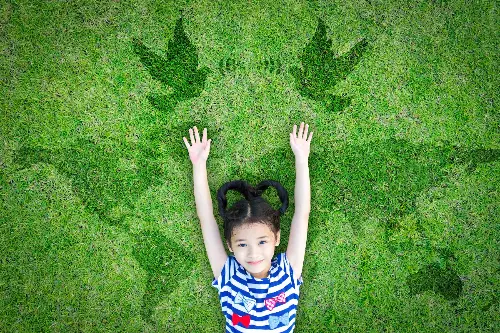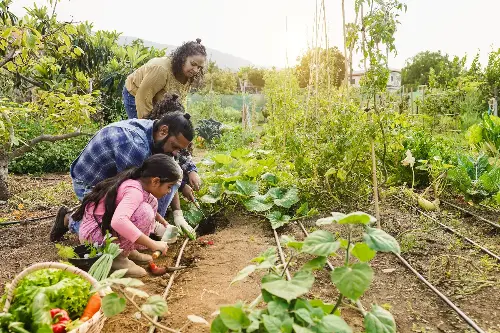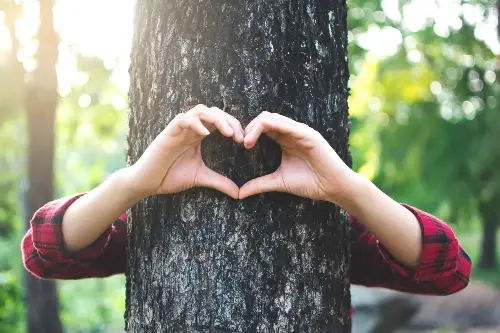In an era where environmental concerns are more urgent than ever, it's essential that the next generation grows up with a strong connection to the planet they call home. Cultivating green hearts in our children is not just about teaching them to recycle or turn off the lights when they leave a room; it’s about fostering an intrinsic love for nature and a deep-seated drive to protect it. Here’s how we can sow these seeds of environmental stewardship in our children's lives from an early age.

One of the most powerful ways to instill a love for the environment is through outdoor play and exploration. Exposure to nature has been linked to various health benefits, such as reduced stress, improved concentration, and greater physical fitness. More than that, it builds a child’s relationship with the environment. When children climb trees, skip stones across ponds, and chase butterflies, they’re not just playing; they’re learning. Through these interactions, they develop a sense of wonder and individual connection to the natural world.
The power of storytelling cannot be underestimated in teaching environmental appreciation. Classic tales with an ecological twist, books about the wonders of the sea, the majesty of forests, and the cycles of nature can all help forge emotional connections between young readers and the planet. Stories have a unique way of embedding values and can be a perfect avenue for discussing complex issues like climate change in a way that’s accessible and resonant for kids.
Active participation is key to an engaging environmental education. Simple activities like starting a family compost bin or designing a bird feeder encourage hands-on involvement and help kids to understand the impact of their actions. Process-based learning can be incredibly rich—by taking care of a small garden, children can watch the life cycle of plants and witness the importance of bees and other pollinators first-hand.

Schools are also pivotal in shaping young environmentally conscious minds. Encouraging the integration of eco-friendly practices into the curriculum can have a striking impact. Educational programs that include field trips to local parks, nature reserves, or recycling plants offer invaluable real-world learning experiences. Teaching kids about local flora and fauna, as well as global ecosystems, broadens their perspective and highlights the diversity of life on Earth and the importance of its conservation.
Role modeling is also a crucial aspect of nurturing green hearts. When children see their guardians making environmentally mindful choices, they’re more likely to adopt similar behaviors. Whether it’s choosing to cycle or walk instead of driving, or opting for products with minimal and sustainable packaging, these everyday decisions can act as powerful teaching moments.

Of course, talking to kids about environmental issues must be age-appropriate. While it's important to be honest about the challenges facing our planet, fostering hope and emphasizing the ability to effect change is essential to prevent feelings of helplessness. Empower children by celebrating the successes of environmental activists and innovations in sustainable technology, highlighting that positive change is not just possible, but it’s happening.
Encouraging a sense of environmental responsibility can be incredibly empowering for children. When they realize they can have a positive impact on the world, it’s a source of pride and purpose. Participative initiatives like beach clean-ups, tree planting days, or wildlife conservation projects allow children to see the tangible results of their efforts and the direct benefit to the environment.
Yet, teaching environmental love isn’t just about the do’s; it's equally about fostering a mindset that questions the status quo. Encouraging critical thinking about consumption habits, energy use, and the principles of reduce, reuse, and recycle can spark ingenuity and innovation in kids. Creating a platform where they can voice their opinions and ideas about environmental issues is incredibly enriching.

In a digital age, incorporating technology in environmental education can be a driving force in captivating the youth. Interactive apps, educational games, and online resources can support traditional learning methods, offering new ways to engage with complex concepts and global issues. Technology can bridge the gap between knowledge and action, providing tools for tracking progress, exploring alternatives, and connecting with a broader community.
Finally, celebrating nature and its gifts can sometimes be the simplest and most effective way of growing green hearts. Observing environmental holidays, cherishing seasons, and practicing gratitude for the natural resources we often take for granted reinforce the value of our planet and its ecosystems.
In conclusion, nurturing a love for the environment in our children is a multifaceted journey. It requires consistent effort, creativity, and an open channel of communication about our planet’s beauty and its vulnerabilities. By empowering the next generation with knowledge, hands-on experiences, and positive role models, we're cultivating not just green hearts but active participants in shaping a more sustainable future for all. It's clear that our children are capable of profound love and respect for nature, and with our guidance, they can lead the way to a brighter, greener world.